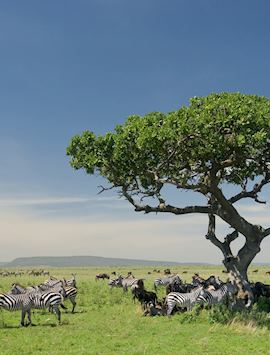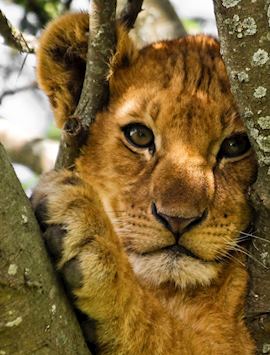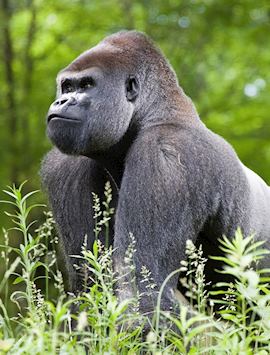By safari specialist Laura
The hold-your-breath moments of a safari, followed by the serenity of an island stay... Including time at the beach is something I encourage for anyone embarking on a safari, and Tanzania and Zanzibar make for the ideal pairing. On a trip that combines the two destinations (both are part of the same country), you could be spotting elephants in the bush one day and snorkelling among fish-filled corals the next.
Why combine Tanzania & Zanzibar
From early morning rises on safari to climbing Kilimanjaro, your time in Tanzania will likely be action-packed. That’s why I always recommend time to unwind at the end of your trip, and Zanzibar is one of the best places for it. With soft white-sand beaches lapped by the warm waters of the Indian Ocean, a stay on one of the archipelago’s laidback islands invites you to slow down and relax.
I also think Tanzania and Zanzibar is the ideal combination for couples or families because you can easily balance different interests — wildlife and outdoor adventure on the mainland with beach relaxation, snorkelling, and island culture in Zanzibar. There are various islands to choose from, whether you want to be close to lively Stone Town on Zanzibar Island or soak up the peace and quiet of Pemba.
Ideas for your time in Tanzania
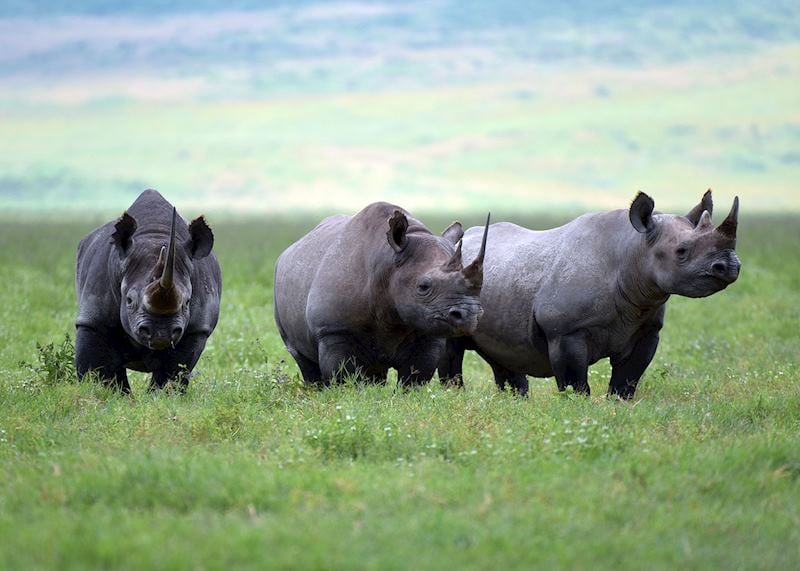
The swells of migrating herds in the Serengeti, the birdlife-rich riverbanks of Nyerere, and the chimpanzee-inhabited forests of the Mahale Mountains… Tanzania’s reputation as a wildlife hotspot is well earned, and many of my most cherished safari moments happened here.
For a classic safari experience, I always recommend a stay in the Serengeti, and, by extension, the Ngorongoro Crater because you’ll pass it en route. Both areas shelter the Big Five, which you can look out for during daily wildlife drives. You might also spot cheetahs, wild dogs, hyenas, and a wealth of other species. Ngorongoro is Tanzania’s best place to spy black rhinos, while the Serengeti sees millions of wildebeests snaking through its golden plains and plunging into crocodile-infested waters during the Great Migration.
If you have more time, or you’d like a different style of safari experience, there are plenty more parks to choose from. In Nyerere, you can take boat safaris along the Rufiji River, where you might spot hippos, bee-eaters, and fish eagles, while remote Ruaha is ideal for walking safaris. Here, you can head out with an expert guide to examine the intricacies of the bush in greater detail, like the dusty paw prints left by a prowling lion or the inner workings of a termite mound.
In the Mahale Mountains, you can track chimpanzees by day and rest beside a white-sand shore come evening. There’s also Lake Manyara National Park, with it 400-plus bird species, Tarangire National Park, with its huge herds of elephants, and the list goes on and on.
Wildlife isn’t Tanzania’s only attraction, though. You might instead (or additionally) choose to tackle the multi-day climb to Mount Kilimanjaro’s summit. There are several routes to choose from, but my personal favourite is the Lemosho route. Its gradual ascent makes acclimatisation easier, and it’s often considered the most scenic option, passing through rainforest, moorland, and alpine desert. Look out for black-and-white colobus monkeys along the way, too.
You’ll no doubt soak up local culture as you connect with guides throughout your trip, but for a more immersive experience, I can arrange for you to spend a couple of nights in the Yaeda Valley. The area is home to the Hadzabe people, who are traditional hunter-gathers. Together with a guide who’s built a strong relationship with the community, you’ll trek with the men while they hunt for food or learn about gatherer skills with the women as they pick berries and dig for tubers. At night, you’ll stay in a simple fly camp. The facilities are fairly basic, but it’s worth it for the authentic cultural insights you’ll gain in this region.
Best camps & lodges in Tanzania
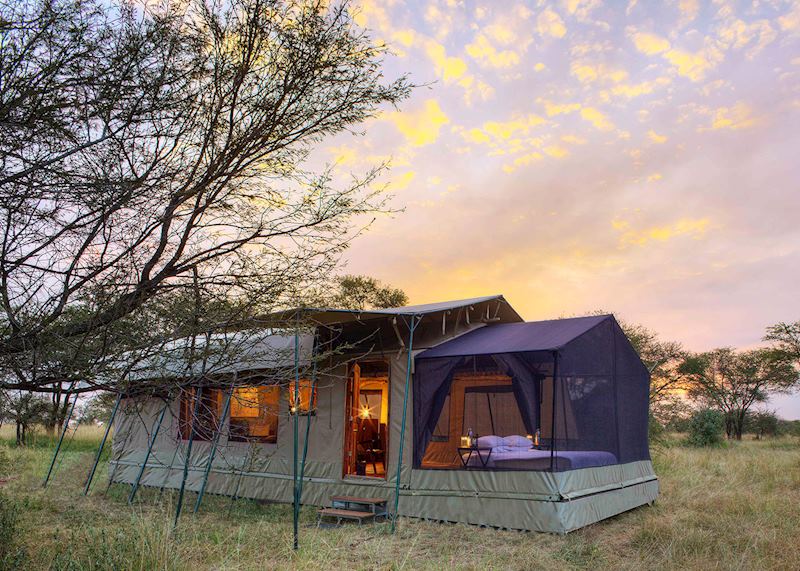

What I love about Tanzania is the choice of camps and lodges you have in almost all the main wildlife areas.
In the Serengeti, I love Olakira Migration Camp because it moves twice a year to bring you as close to the action as possible. The tents are simple, but comfortable, and wildlife often wanders right past the camp. If you want a little more luxury, though, Sayari is another of my top choices. During my own stay, I spotted a whole pride of lions while I was relaxing at the camp between drives.
As for Ngorongoro, you can’t go wrong with The Highlands with its domed, glass-fronted suites. It’s close to the crater, where you’ll go for wildlife drives, but unlike camps in other regions of the conservation area, you can also take hikes down into the lesser-known Empakaai Crater. For a more traditional stay, there’s Kitela Lodge, which has thatched-roof chalets surrounded by gardens, a coffee plantation, and a working farm.
Elsewhere, there are plenty of camps and lodges to choose from, whether you want a classic tented experience or a sprawling suite with a private pool and veranda.
Ideas for your time in the Zanzibar Archipelago
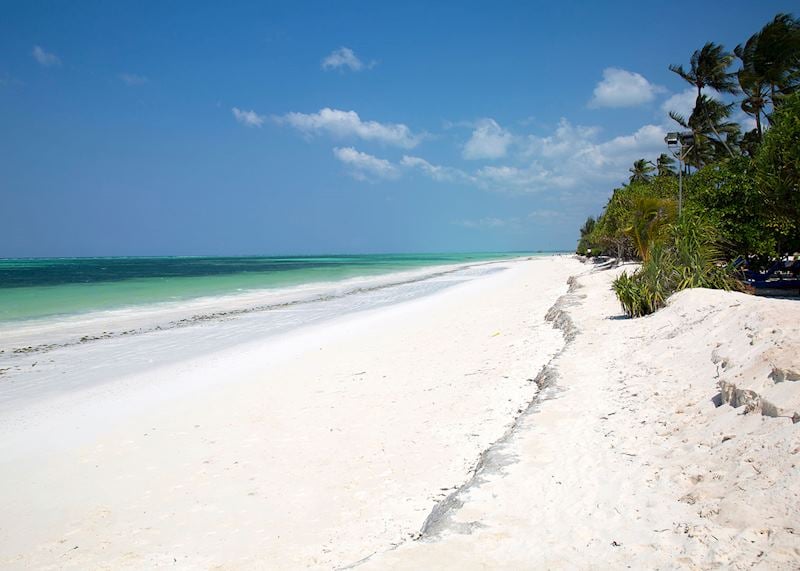
The archipelago’s largest island, Zanzibar Island (known locally as Unguja) is by far the most developed, so there’s plenty to do and see. You could take a guided walking tour along Stone Town’s cobbled streets or visit a spice farm to uncover the island’s international trade roots. I’ll also weave in plenty of time for you to relax so you can make the most of Zanzibar’s many palm-fringed beaches.
Alternatively, for a “get away from it all” kind of beach stay, my recommendation is Pemba Island, which has far fewer visitors than Zanzibar. The interior is filled with forests, swamps, mangroves, and clove farms that fill the air with fragrance at harvest time. There are plenty of practically deserted beaches to explore here if you’re in the mood to listen to the sounds of the ocean with almost no one else around. You could also dive into dramatic drop-off reefs or take a sunset cruise on a Swahili ngalawa (a traditional double-outrigger canoe).
Though it’s a hard challenge to rise to, there is another island that’s even more tranquil than Pemba: the private island of Mnemba. Just off of Zanzibar’s northeastern coast, the island’s only inhabitants will be you, a small group of other guests, and the team caring for you (there’s only one property here). During your stay, you can snorkel among pristine coral reefs, find a secluded beach to relax on, or learn about the island’s green turtle conservation efforts — you might even see hatchlings making their way to the water.
My final recommendation isn’t officially part of Zanzibar, but it’s nearby and just as easy to get to after your time in mainland Tanzania — Mafia Island. Beyond its peaceful, pearly white sands and balmy turquoise waters, the big draw here is that you can swim with whale sharks (typically between November and March). I remember the thrill of hearing our guide yelling “go!” when it was time for us to leap off the boat into the water just as the whale sharks came into view beneath the waves. I was in awe as these gentle giants languidly swam beneath me, as if in slow motion.
Best hotels in the Zanzibar Archipelago
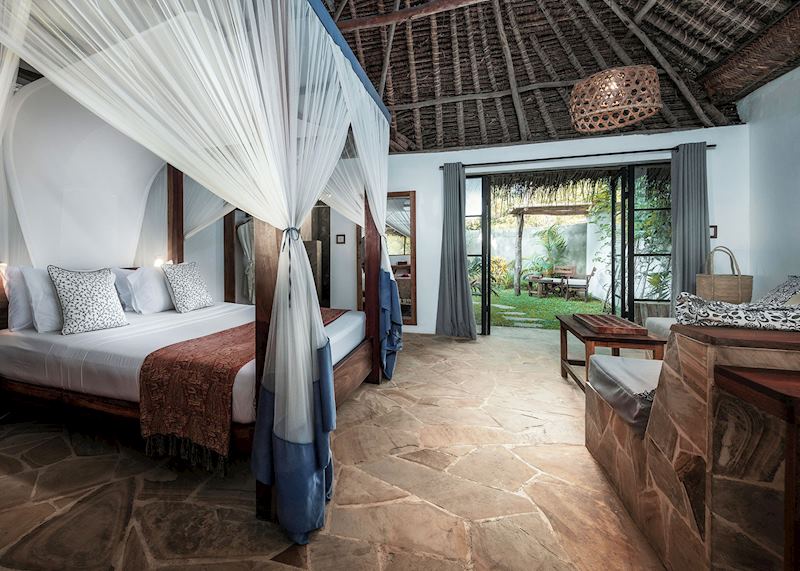

Out of all the islands, Zanzibar Island has the largest choice of stays, ranging from lavish oceanfront resorts to boutique Swahili-style hotels further inland. For families, I suggest Breezes Beach Club & Spa, which is cocooned among coconut trees and has plenty of activities to keep children entertained. Xanadu, on the other hand, is ideal for a romantic retreat. There are just a handful of individually designed villas spread out across the property’s grounds. Each has a private plunge pool and a dedicated butler, and there’s a spa located right on the beach.
Options are more limited on the other islands, but only because their shores are largely undeveloped. In Pemba, I like Manta Resort, which sits on a quiet stretch of white-sand beach. There’s even a floating underwater room offshore, where you can watch shoals of reef fish swim from the comfort of your bed.
Meanwhile, on Mafia Island, I recommend either Butiama or Pole Pole. Both have thatched-roof bungalows with private outdoor spaces to unwind, though Butiama is located outside of the island’s marine park and Pole Pole within it.
The only property on Mnemba belongs to &Beyond. Here, the palm-frond bandas (thatched-roof huts) are shaded by tropical forest, and each one is designed in a spiral form, mirroring nautilus seashells. You’ll have a private lounge overlooking your own slice of the beach, as well as a personal butler to take care of you throughout your stay.
Getting between Tanzania & Zanzibar
In mainland Tanzania, you’ll likely combine light aircraft travel with driving (I can arrange a private driver-guide for you). Depending on where you set off from, you’ll then take a light aircraft or a regular commercial flight over to Zanzibar Island. From Dar es Salaam, near Nyerere National Park, it takes as little as 30 minutes to fly to Zanzibar, while a flight from the Serengeti takes just over two hours.
There are also direct flights from Dar es Salaam to Pemba and Mafia Island, or you can take a short flight from Zanzibar Island.
Befitting of a private island, you’ll arrive in Mnemba cruising on an open ski boat, a journey that takes just 15 minutes from the northeastern coast of Zanzibar Island.
Best time to visit Tanzania & Zanzibar
Zanzibar’s weather follows a similar pattern to the mainland, so I’d plan your combined Tanzania and Zanzibar trip based on what you want to see during your safari. For your best chances of seeing a Great Migration river crossing in the Serengeti, I suggest visiting in September, although you can see them as early as July. If that’s not a priority, I really like the end of October, when visitor numbers start to decline but the weather is still warm and dry. For even quieter wildlife viewing, November to March (green season) is ideal. You’ll experience some short rains, but you’ll be rewarded with migratory birds and newborn animals.
Read more about trips to Tanzania & Zanzibar
Start thinking about your experience. These itineraries are simply suggestions for how you could enjoy some of the same experiences as our specialists. They're just for inspiration, because your trip will be created around your particular tastes.
View All Tours in Africa

